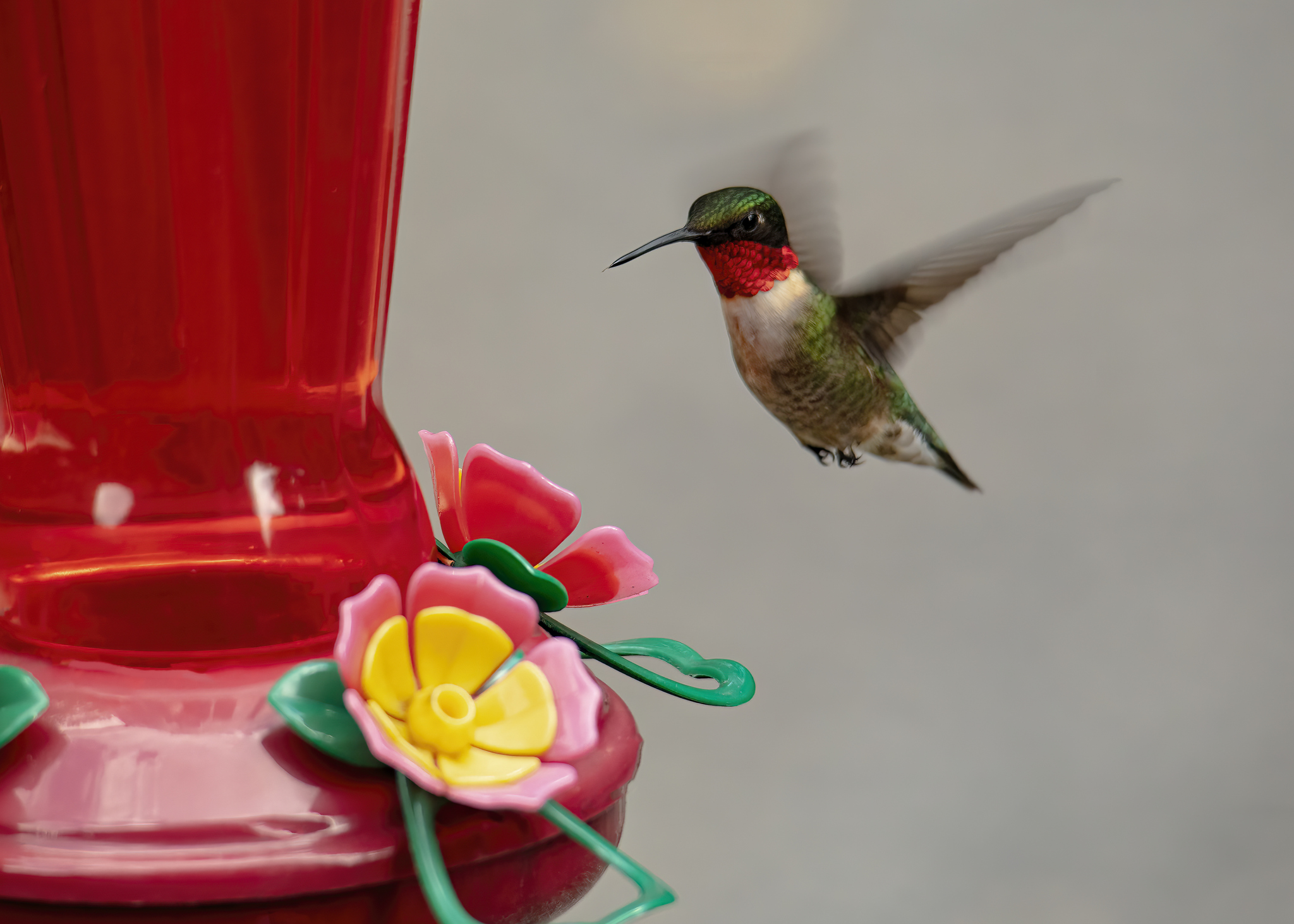Small bird, big thrills: Hummingbirds are among Kansans’ favorite sightings

They may be small and tough to spot, but backyard hummingbirds sure seem to cause a big stir.
“I’ve been a bird watcher since I was four years old, so I’ve been doing this for a long time,” said Chuck Otte, a Kansas State University Research and Extension agriculture and natural resources agent in Geary County. “But in the last 20 years, there has been an explosion of interest in hummingbirds.”
Folks in Kansas and much of the Midwest likely have several more weeks to enjoy the petite birds, which weigh as little as 3.2 grams—or somewhere between the weight of a penny and a nickel.
“The real action started in mid-summer, around July 15,” said Otte.
In Kansas, “99.99%” of hummingbirds in the eastern half of the state are Ruby-throated hummingbirds, according to Otte. West of Wichita and Salina, he said there are fewer Ruby-throated birds and more of such western species as Rufous, Broad-tailed, Calliope and Black-chinned.
An avid birder, Otte said hummingbird activity is likely to continue in Kansas through the end of August, when the parents and their offspring begin migrating to southern parts of Mexico and Central America.
But while the fun lasts, Otte said backyard enthusiasts in Kansas can encourage hummingbird sightings by following a few simple guidelines:
• Place feeders where they are easily seen and reached for cleaning and filling. In general, feeders that are in an open area with plenty of sun have more activity.
• Change nectar every two to three days; every day if it’s hot and sunny.
• Fill feeders two-thirds full. If birds drink that amount quickly, fill a little higher the next time.
• Make sure you’ve got red on the feeder and in the landscape.
“You do not need red dye in the water; in fact, dyes may be detrimental,” Otte said, noting that the concentration in most red dyes on the market exceeds the recommended daily limit of red dye #40 for humans.
“The color red is a flashing neon sign for hummingbirds,” Otte said. “Put on a red shirt or a red hat and sit out on your deck, then see how long it takes for one to come check you out. On feeders, a small amount of red color is all you need.”
When making nectar for the feeder, he suggests a mixture of four parts water to one part sugar, which does not need to be boiled. The feeder should be cleaned with a weak bleach solution each time you add nectar. “Do not use honey or artificial sweeteners,” he said; honey may cause an infection and sweeteners have no food value to hummingbirds.
“One 8-ounce feeder will fulfill the daily energy needs of 40 to 60 hummingbirds. More feeders will allow them to feed more easily with less stress. You can also use more feeders to defeat territoriality among the birds.”
Otte’s go-to source for learning more about hummingbirds is the publication, Hummingbirds of North America, in the Peterson Field Guide series.


